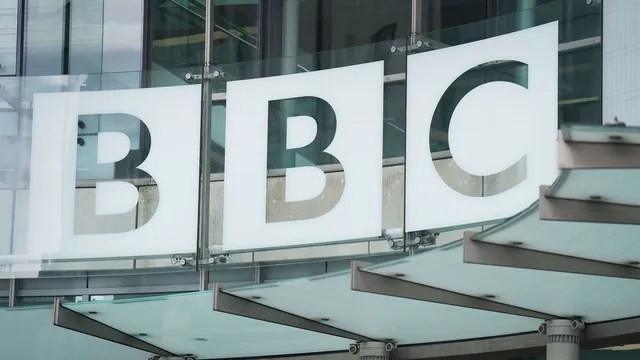
BBC boss advocates reform for funding stability
2025-06-04 19:00- Tim Davie advocated for a re-evaluation of the BBC's funding model, emphasizing universal funding and addressing previous budget cuts.
- The government pledged to increase the licence fee in line with inflation until 2027, with a recent rise implemented in April.
- These discussions highlight the ongoing tensions between traditional broadcasters and streaming companies as the media environment evolves.
Express your sentiment!
Insights
In London, the BBC director-general Tim Davie highlighted crucial concerns regarding the financial model of the BBC as the government plans to review its Charter. Speaking at the Media and Telecoms 2025 and Beyond Conference, Davie insisted on the necessity for universal funding and called for an investigation into significant budget cuts that have affected the broadcaster over the last decade. He expressed his commitment to demonstrate the value of the BBC amidst rising disinterest from the public. Following this, Culture Secretary Lisa Nandy also emphasized the Labour Government's goal of supporting the creative industry, pledging the need for transparency and a vibrant public service funded sustainably. The government has just committed to an inflation-linked increase in the licence fee until 2027, which raised the household fee from £169.50 to £174.50 in April. This increase has brought significant attention to the potential of restructuring the licensing framework to ensure the BBC's future operations. Davie pointed out the issues arising from neglecting the general public’s engagement and stressed the importance of celebrating the BBC's relevance as a vital cultural institution in the UK. Prominent figures from other media organizations were also present at the conference, discussing the intensified competition faced by traditional broadcasters from streaming companies. Davie's remarks on the future also included enthusiasm about incorporating artificial intelligence into the media supply chain, showcasing a forward-thinking approach to adapt to the rapidly evolving technological landscape. Meanwhile, Nandy referenced a forthcoming creative industries sector plan set to launch later in the month, which aims to uplift creative sectors across various regions in the UK. This collaborative effort is intended to bolster investment in both local film and television productions, thereby enhancing the overall robustness of the UK's creative landscape. Alongside this momentum, Kevin Lygo from ITV noted challenges facing national broadcasters and the necessity for improved visibility against the backdrop of competing platforms. These sentiments culminate in a broader narrative surrounding the UK's media landscape, where public service broadcasters like the BBC are increasingly scrutinized to demonstrate their value in a climate rich with alternative entertainment options. The discussions at the conference indicate that significant changes could be on the horizon as stakeholders navigate the delicate balance of preserving the BBC's foundational public service directive while adapting to the realities of a changing media world.
Contexts
The landscape of media consumption has undergone significant transformation over the past decade, with traditional broadcasters facing intense competition from streaming services. This shift is primarily driven by technological advancements and changes in consumer behavior. Audiences are increasingly drawn to the convenience, variety, and affordability offered by on-demand streaming platforms. The rise of Netflix, Amazon Prime Video, Hulu, and other comparable services has not only disrupted traditional viewing habits but has forced conventional broadcasters to reevaluate their content strategies and monetization models to retain viewership. One of the most salient differences between traditional broadcasters and streaming services lies in their content delivery mechanisms. Traditional broadcasters primarily rely on scheduled programming, which can restrict viewer choices and viewing flexibility. In contrast, streaming platforms provide content on demand, allowing users to watch shows and movies at their convenience. Furthermore, streaming services invest heavily in original content to cultivate unique identities that attract and retain subscribers, diverging from the typical reliance on reruns and syndication that characterize many traditional broadcasters. This, coupled with the ability to analyze viewer preferences using data-driven insights, has positioned streaming services as formidable competitors in the media industry. Financial implications of this competition are also noteworthy. Traditional broadcasters are grappling with declining advertising revenues as audiences migrate to ad-free subscription services. This has prompted many to seek partnerships with streaming platforms or launch their own services in an effort to capture a piece of the growing streaming market. Nevertheless, the financial viability of such strategies remains uncertain. For example, substantial investment in original programming is necessary to compete effectively, which can be a risky gamble if it does not translate into sufficient subscriber growth and retention. Additionally, the COVID-19 pandemic has accelerated these trends by emphasizing the importance of digital distribution and changing content consumption patterns, leading to a hastened decline in traditional TV viewership. To navigate this competitive landscape, traditional broadcasters are exploring hybrid models that leverage both live programming prowess and the on-demand flexibility of streaming. Strategies such as investing in advanced technologies, enhancing viewer experiences through interactive content, and pursuing cross-platform distribution are becoming essential. Furthermore, traditional broadcasters are also focusing on niche markets to capture dedicated audiences that might be overlooked by larger streaming platforms. As the competition between traditional broadcasters and streaming services continues to evolve, adaptability and innovation within content creation and distribution strategies will be paramount for success in securing viewership and maintaining relevance in an increasingly fragmented media environment.